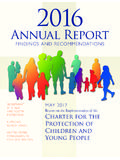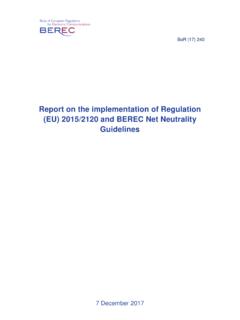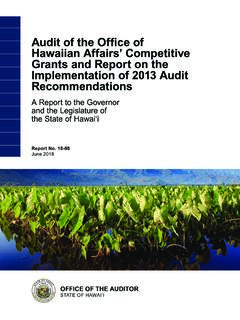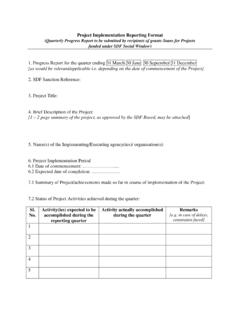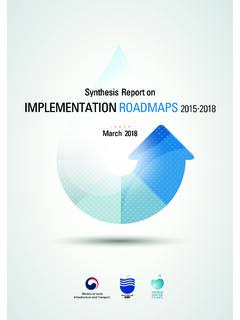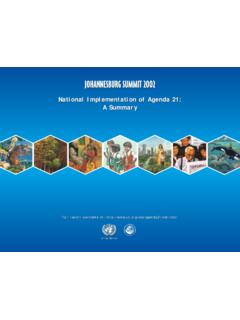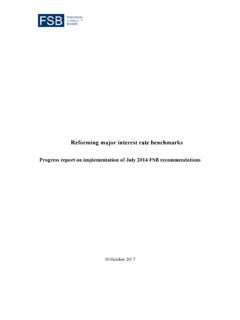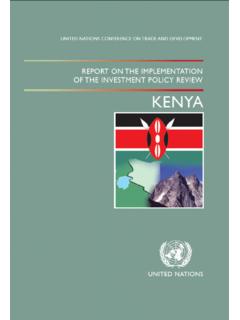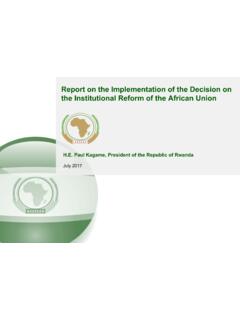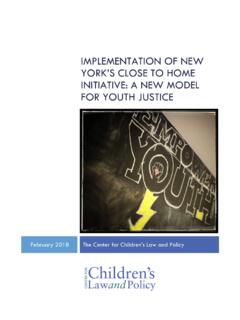Transcription of Developing an Effective Evaluation Report
1 Developing an Effective Evaluation Report Setting the course for Effective program evaluationAcknowledgmentsThis workbook was developed by the Centers for Disease Control and Prevention s (CDC s) Office on Smoking and Health (OSH) and Division of Nutrition, Physical Activity and Obesity (DNPAO), and ICF International as part of a series of technical assistance workbooks for use by program managers and evaluators. The workbooks are intended to offer guidance and facilitate capacity building on a wide range of Evaluation topics. We encourage users to adapt the tools and resources in this workbook to meet their programs Evaluation workbook applies the CDC Framework for Program Evaluation in Public Health ( ) to construct a final Evaluation Report .
2 The Framework lays out a six-step process for the decisions and activities involved in planning and conducting an Evaluation . While the Framework provides steps for program Evaluation , the steps are not always linear and represent a more back-and-forth effort; some can be completed concurrently. In some cases, it will make sense to skip a step and go back to it. The important thing is to consider and use the steps to construct a final Evaluation Report within the specific context of your final Evaluation Report presents findings, conclusions, and recommendations.
3 It has been said that a Report is never truly final, unless the program is ending, because Evaluation is an ongoing process. In this workbook, final refers to the term that funders often use to denote the last Report of a funding period or the final Report of a specific Evaluation more information, contact: Rene Lavinghouze, Evaluation Team Lead, in OSH at or Jan Jernigan, Senior Evaluation Scientist, in DNPAO at Citation: Developing an Effective Evaluation Report : Setting the course for Effective program Evaluation . Atlanta, Georgia: Centers for Disease Control and Prevention, National Center for Chronic Disease Prevention and Health Promotion, Office on Smoking and Health, Division of Nutrition, Physical Activity and Obesity, of Contentsi Table of ContentsPart I: Writing the Final Evaluation Report .
4 1 Who is the audience for this workbook? ..1 What is a final Evaluation Report ? ..1 Why do you want a final Evaluation Report ? ..2 How do you write an Evaluation Report ? ..3 Evaluation Report Overview ..4 What are the key steps in Developing and disseminating a final Evaluation Report using CDC s Framework? ..7 The Process of Participatory Evaluation Reporting ..9 Step 1: Engage Stakeholders ..9 Define the Purpose of the Evaluation in the Report ..9 Engage the Evaluation Stakeholder Workgroup (ESW) ..9 Step 2: Describe the Program.
5 12 Create a Shared Understanding of the Program ..12 Provide a Narrative Description ..12 Include a Logic Model ..13 Describe the Stage of Development ..14 Step 3: Focus the Evaluation Design ..17 Describe the Evaluation Questions ..17 Process Evaluation Focus ..18 Outcome Evaluation Focus ..18 Discuss Feasibility Issues ..19 Step 4: Gather Credible Evidence ..20 Present Credible Evidence ..20 Describe Methods and Data Sources ..21 Quantitative and Qualitative Methods ..21 Use the Evaluation Plan Methods Grid ..22 Report Data With Clarity.
6 24 Table of Contentsii Report Clarity of Quantitative Data ..24 Report Clarity of Qualitative Data ..25 Step 5: Justify Conclusions ..27 Use Tools for Reporting With Clarity ..29 Step 6: Ensure Use and Share Lessons Learned ..30 Plan for Communication and Dissemination ..31 Other Communication and Reporting Efforts ..34 Ensure Use of Information ..35 Use Tools for Clarity in Reporting ..36 Prepare an Executive Summary ..36 Include References and Appendices ..37 One Last Note ..37 Pulling It All Together ..39 References ..42 Part II: Exercise, Worksheets, and Tools.
7 45 Step 1: Stakeholder Inclusion and Communication Plan Exercise ..46 Step 1: Stakeholder Information Needs Exercise ..47 Step 3: Checklist for Assessing Your Evaluation Questions ..49 Step 5: Stakeholder Interpretation Meeting Exercise ..51 Step 6: Communicating Results Exercise ..54 Outline: Reporting Checklist Tool ..61 Tools and Templates: Checklist for Ensuring Effective Evaluation Reports* ..61 Outline: Evaluation Report Outline Examples ..62 Logic Models: OSH and DNPAO Logic Model Examples ..65 Preventing Initiation of Tobacco Use Among Young People.
8 65 Eliminating Nonsmokers Exposure to Secondhand Smoke ..66 Promoting Quitting Among Adults and Young People ..67 State NPAO Program Detailed Logic Model (FOA 805 & TA Manual) ..68 Table of Contentsiii Resources* ..69 Web Resources ..69 Making Your Ideas Stick: Reporting and Program Planning ..71 Qualitative Methods ..72 Pulling It All Together ..72 Evaluation Use ..73 OSH Evaluation Resources ..73 DNPAO Evaluation Resources ..76 Figures and Acronymsiv FiguresFigure 1: CDC Framework for Program Evaluation in Public Health ..7 Figure 2: Logic Model Example.
9 13 Figure 3A: Logic Model Category by Stage of Development Example ..15 Figure 3B: Logic Model Category by Stage of Development With Corresponding Evaluation Questions ..16 Figure 4A: Evaluation Plan Methods Grid Example 1 ..23 Figure 4B: Evaluation Plan Methods Grid Example 2 ..23 Figure 5: Communication Plan Table ..33 Figure 6: Examples of Upstream, Midstream, and Downstream Successes With a Media Campaign ..34 AcronymsCDC Centers for Disease Control and PreventionCMI Component Model of Intfrastructure DNPAO Division of Nutrition, Physical Activity, and Obesity ESW Evaluation Stakeholder Workgroup NIDRR National Institute on Disability and Rehabilitation Research OSH Office on Smoking and Health QA Quality Assurance1 Part I: Writing the Final Evaluation ReportWHO IS THE AUDIENCE FOR THIS WORKBOOK?
10 The purpose of this workbook is to help public health program managers, administrators, and evaluators develop a joint understanding of what constitutes a final Evaluation Report ; why a final Report is important; and how they can develop an Effective Report . This workbook is to be used along with other Evaluation resources, such as those listed in the Resources section. Part I defines and describes how to write an Effective final Evaluation Report . Part II includes exercises, worksheets, tools, and resources. The contents of Part II will facilitate the process for program staff members and Evaluation stakeholder workgroup (ESW) members to think through the concepts presented in Part I.










